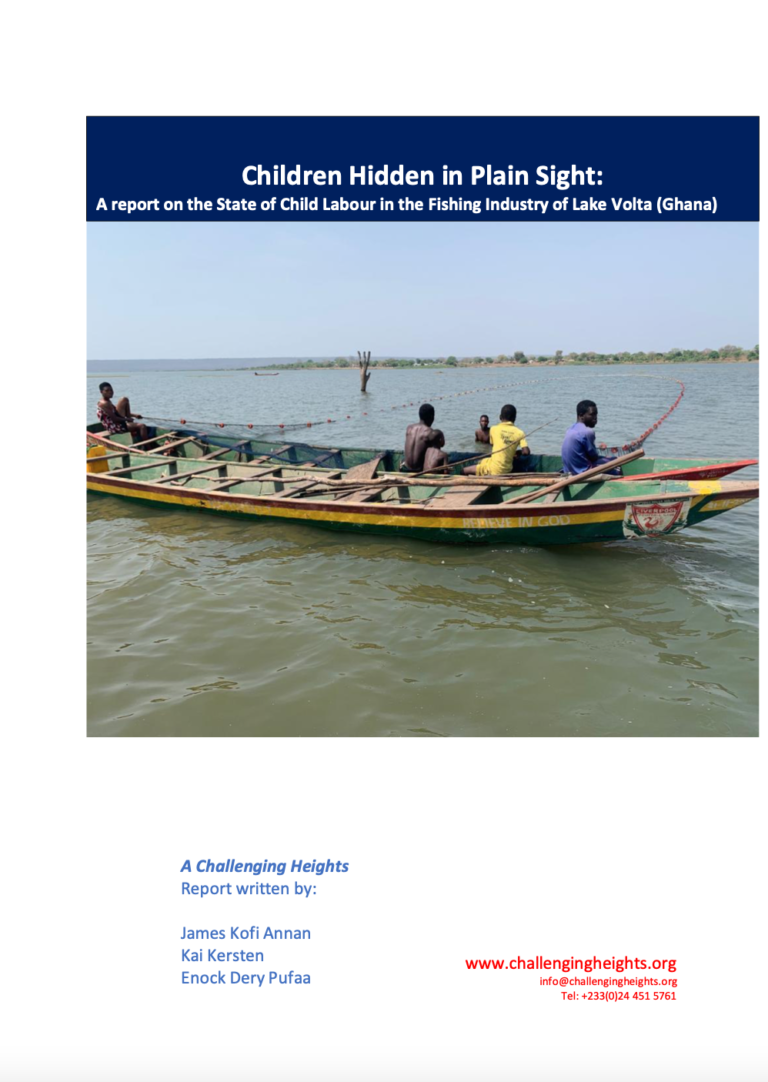Child Labour is a widespread problem in various sectors of Ghana’s economy. Especially in the fishing industry, child labour is common, and children are involved in hazardous task that are detrimental to their physical or psychological well-being and their formal education. This report focused on data collection in various fishing communities around Lake Volta to find out the numbers of child labourers involved in the fishing industries, their gender and age distribution and work tasks and how they are treated by their superiors. The findings of this study are alarming, because the number of child labourers around Lake Volta are much higher than previously assumed. We will show in this report that around 60% of the children interviewed are child laborers, performing tasks such as diving and disentangling nets or processing fish. It was previously assumed that most child laborers in the fishing industry are boys and that more girls are employed in domestic workspaces. This report, however, will show that the gender distribution is not as rigid and that roughly 60% of the child laborers are male and 40% female.

